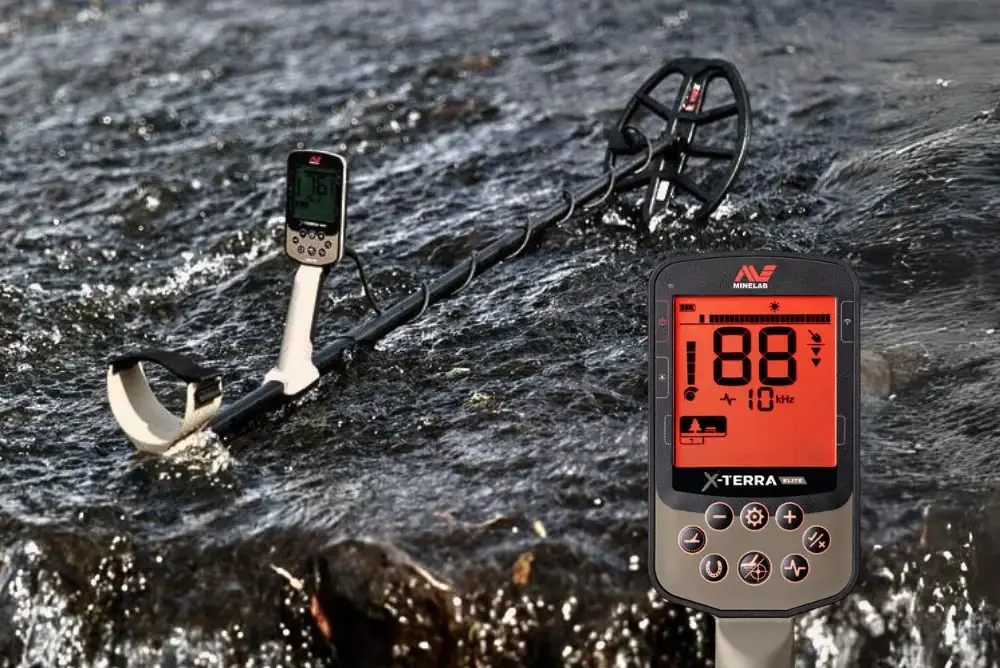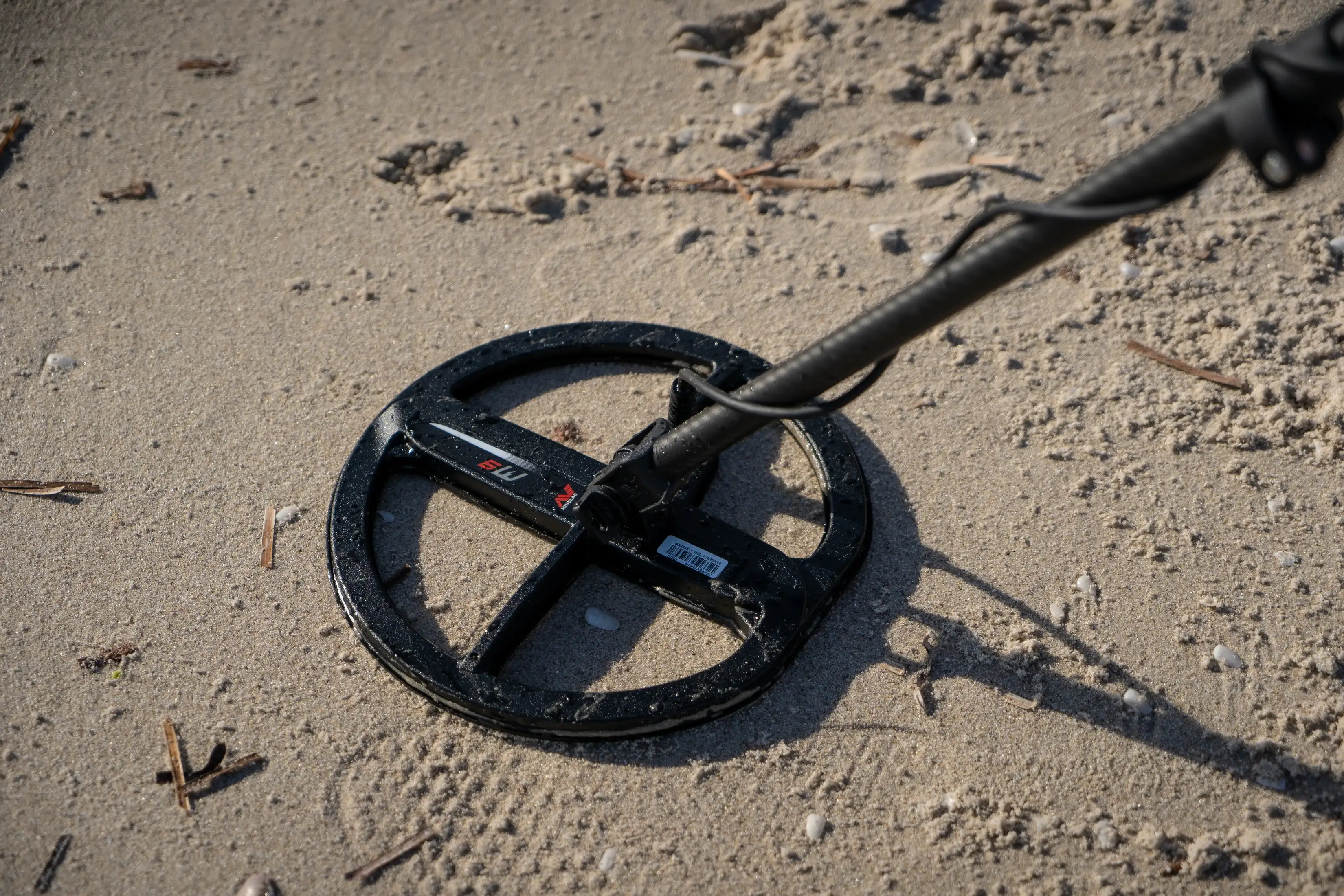We use cookies to enhance your browsing experience serve personalized ads or content, and analyze our traffic. By navigating our website, you consent to our use of all cookies. You can opt-out if you wish by clicking on “Configure Cookies”
Detecting in Mineralized Soils: Understanding and Overcoming Ground Signals

If you’ve ever struggled with erratic signals, reduced detection depth, or frustrating chatter from your metal detector, mineralized soil could be the cause. But what exactly is happening beneath the surface? To truly understand how to detect in mineralized conditions, it’s important to know how the ground’s natural electromagnetic field interacts with your detector’s signals—and how you can adjust for the best results.
The Ground’s Electromagnetic Field and How It Affects Detecting
The Earth itself has a natural electromagnetic field, influenced by minerals, salts, and moisture in the soil. When you use a metal detector, it creates its own electromagnetic field by transmitting a signal into the ground. If there’s a metal object in the soil, that object will disrupt the detector’s signal, creating a secondary field that the detector can recognize.
However, in mineralized soil, minerals within the ground also interact with the detector’s electromagnetic field. This can create:
• Excessive ground noise – The minerals in the soil can produce their own electromagnetic responses, causing the detector to react as if it’s detecting a metal target.
• Signal distortion – Strong mineralization can weaken or alter the signals from real metal objects, making target identification less accurate.
• Reduced detection depth – Instead of allowing signals to penetrate deep, mineralized soil can absorb or scatter them, making it harder to detect buried targets.
Types of Mineralization and Their Impact
There are two primary types of mineralization that interfere with metal detecting:
-
Ferrous Mineralization (Iron-Rich Soil)
• Found in red clay, black sand, and areas with high concentrations of iron oxides.
• Can cause strong false signals and make it difficult to distinguish real targets.
• Creates a magnetic response that interacts with the detector’s electromagnetic field, causing instability.
-
Non-Ferrous (Salt-Based) Mineralization
• Found in wet beach sand, tidal flats, and alkali-rich soils.
• Conductive salt minerals can disrupt a detector’s signal, leading to erratic responses.
• Requires specialized ground balancing to minimize interference.
How Metal Detectors Handle Mineralization
To overcome the effects of the ground’s electromagnetic field, modern metal detectors use several key technologies:
1. Ground Balance
Ground balance helps neutralize the effect of mineralization by filtering out background signals caused by the ground itself. Some detectors offer:
• Manual Ground Balance – Allows users to manually adjust the detector to compensate for mineralization; raise and lower the machine without an input allowing the detector to balance itself out.
• Automatic Ground Balance – Digitally calibrate the unit to compensate for ground mineralization by holding down the accept/reject button while raising and lowering the coil off the ground.
• Tracking Ground Balance – Continuously adjusts in real-time to changing ground conditions — either maintaining a steady balance while already detecting, or updating your ground balance as you move into a slightly different terrain.

2. Multi-Frequency Detection (Multi-IQ)
Single-frequency detectors struggle in mineralized soil because the chosen frequency may be highly affected by ground minerals. Minelab’s Multi-IQ technology transmits multiple frequencies at once, which allows it to:
• Analyze and adjust for mineralization across different frequency ranges.
• Maintain stable target identification even in highly mineralized ground.
• Provide better depth and accuracy compared to single-frequency detectors.

3. Coil Selection
The type of search coil used can impact how well a detector handles mineralization:
• Double-D (DD) Coils – Offer better performance in mineralized ground because they create a more focused electromagnetic field, reducing ground noise.
• Smaller Coils – Can help isolate targets in highly mineralized areas by reducing the amount of mineralized soil being analyzed at once.
Finding More in Tough Conditions
Mineralized soil can be a challenge, but understanding how the ground’s electromagnetic field interacts with your detector gives you an advantage. By using the right settings, choosing a detector with advanced technology like Multi-IQ, and adjusting your detecting techniques, you can find valuable targets even in difficult terrain.
Want a detector built to handle mineralized soil? Explore Minelab’s range of high-performance detectors designed to cut through mineralization and help you detect with confidence.
March 10, 2025
|
View: 897
|
Categories: Metal Detecting Tips
|
By: <a class="mp-info" href="https://usa.minelab.com/blog/author/minelab-metal-detector">Minelab</a>












Comments
Muy bonito detector de metales de muy buena calidad y muy duradero